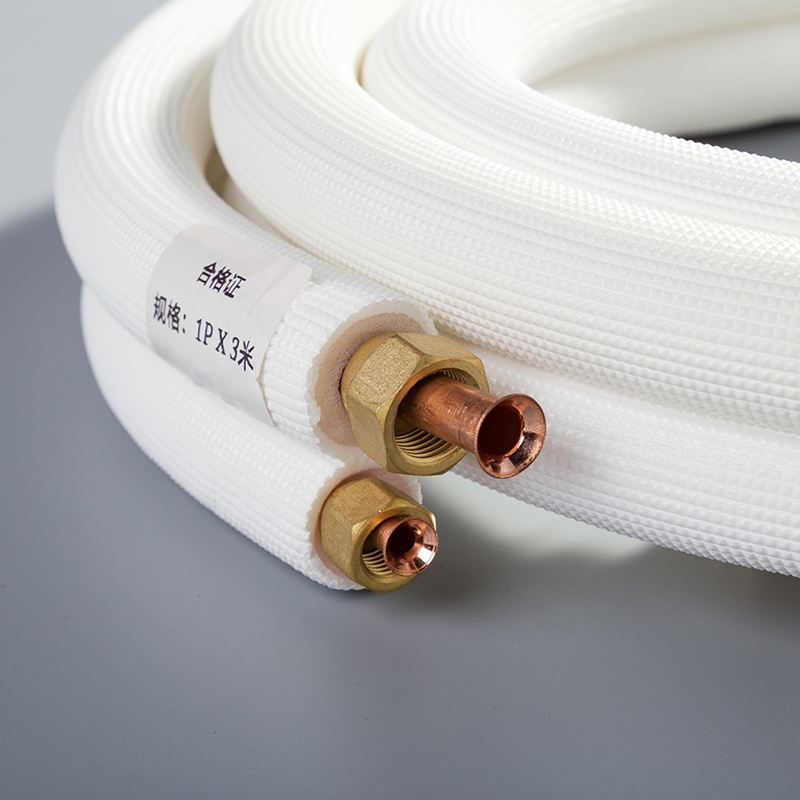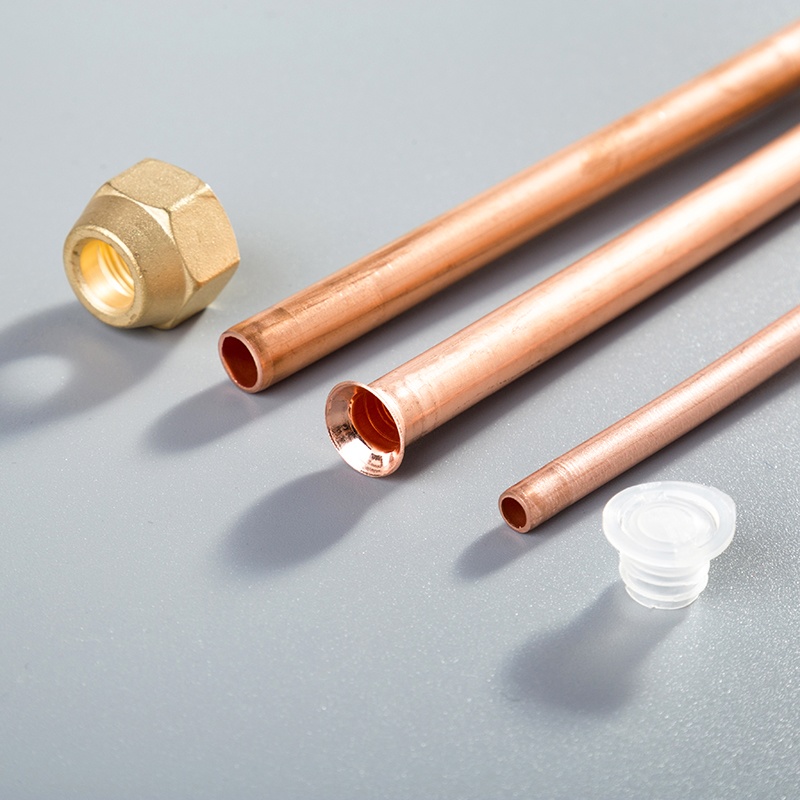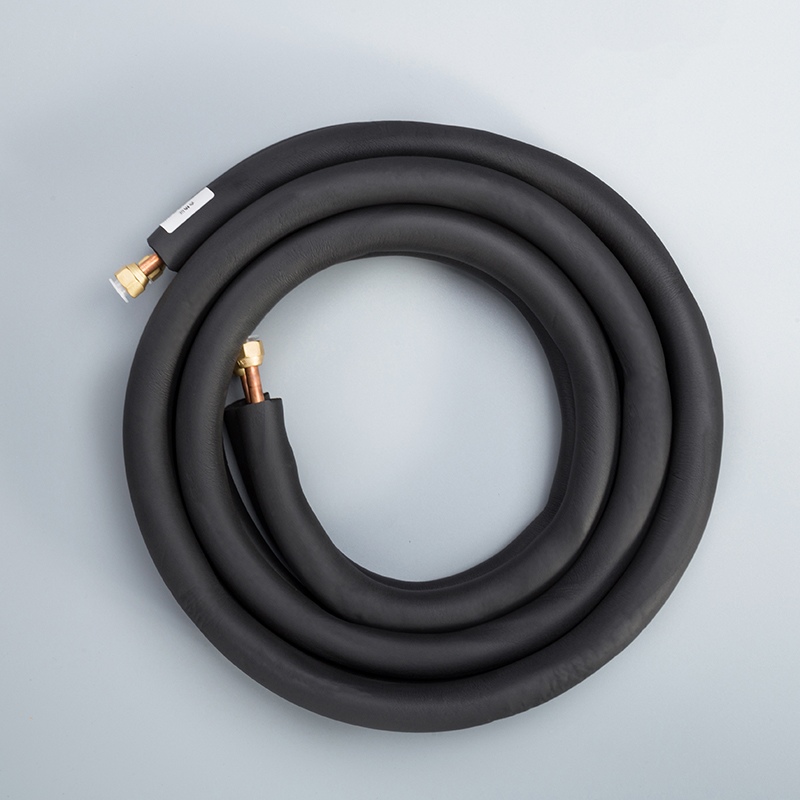Crafting Perfect Bends: Copper Pipe Bender 1/2 Inch Guide

Proper pipe bending is essential for ensuring both durability and efficiency in plumbing and HVAC systems. When handling 1/2 inch copper pipes, precision is absolutely crucial. These pipes, especially Type M, are commonly used for household water distribution, heating systems, and branch supply lines due to their affordability and rigidity. Whether you're installing copper pipe for ac systems or extending water lines, having the right tools is key. A copper pipe bender 1/2 inch allows for smooth, damage-free bends, while a copper pipe cleaner tool ensures your work is clean and efficient for optimal performance.
Key Takeaways
Always wear safety gear like goggles and gloves to stay safe.
Use sand or pipe springs to stop kinks and make smooth bends.
Bend the pipe slowly and evenly to avoid breaking it.
Check your measurements twice to make sure they are correct.
Clean and oil your pipe bender often to keep it working well.
Types of Copper Pipe Benders

When working with copper pipes, selecting the right pipe bender is crucial for achieving precise and efficient bends. Here’s an overview of the main types of copper pipe benders and their unique features.
Manual Pipe Benders
Features
Manual pipe benders are simple tools that rely on your physical strength to bend pipes. They come in various forms, such as dual, mini, and spring tube benders. These tools are lightweight and portable, making them ideal for small-scale tasks. You can use them without electricity, which adds to their convenience. However, they require more effort and may not produce precise angles consistently.
Advantages of Manual Pipe Benders | Disadvantages of Manual Pipe Benders |
|---|---|
Affordable | Requires more effort to operate |
Portable | Not programmable |
Easy to operate | Bends depend on user’s strength |
Operate without electricity | Less durable than hydraulic units |
Ideal for home and DIY tasks | Inability to produce precise angles |
Applications
Manual benders are perfect for home improvement projects and DIY enthusiasts. They work well for bending 1/2 inch copper pipes in plumbing or HVAC systems. If you’re handling light-duty tasks, a manual copper pipe bender 1/2 inch is a cost-effective and practical choice.
Hydraulic Pipe Benders
Features
Hydraulic pipe benders use hydraulic fluid pressure to create bends with minimal effort. These tools are available in vertical and horizontal configurations. Vertical hydraulic benders are standalone units supported by heavy metal stands, while horizontal ones are portable and can be used on flat surfaces. They are powerful enough to handle thicker and larger pipes, ensuring smooth and consistent bends.
Applications
Hydraulic benders are ideal for industrial and heavy-duty tasks. If you need to bend multiple 1/2 inch copper pipes quickly and efficiently, a hydraulic bender is a reliable option. It’s especially useful for professional plumbers and contractors who require precision and speed.
Electric Pipe Benders
Features
Electric pipe benders combine speed, precision, and ease of use. These machines are programmable, allowing you to achieve consistent results even for complex bends. They are designed to prevent issues like wrinkles or cracks, ensuring a professional finish.
Feature | Description |
|---|---|
Speed and Efficiency | Electric pipe benders significantly reduce cycle times, boosting productivity in both small and large-scale operations. |
Precision and Accessibility | These machines combine programmable precision with ease of use, ensuring consistent results even in applications requiring tight tolerances. |
Quality Finish | Designed to prevent issues like wrinkles or cracks, electric benders ensure a smooth, professional finish with every bend. |
Applications
Electric benders are best suited for large-scale or professional projects. If you’re working on a high-volume job that requires bending 1/2 inch copper pipes, an electric bender will save time and deliver flawless results.
How to Use a Manual Pipe Bender for 1/2 Inch Pipes

Preparation
Tools Required
Before you begin, gather the essential tools to ensure a smooth bending process:
Manual pipe bender
Holding clamps
Formers
Handle angle markers
Handles
Having these tools ready will help you achieve precise bends without interruptions.
Safety Precautions
Safety is critical when working with any tool. Follow these precautions to protect yourself and your materials:
Wear safety goggles to shield your eyes from debris.
Use gloves to maintain a firm grip and avoid injuries.
Ensure the workspace is clean and free of obstacles.
Inspect the pipe bender for any damage before use.
Tip: Always double-check your tools and workspace to prevent accidents.
Step-by-Step Instructions
Measuring and Marking
Accurate measurements are the foundation of a perfect bend. Follow these steps:
Use a permanent marker to clearly mark the starting point of the bend.
Measure the distance and angle required for the bend using a tape measure or ruler.
Double-check your measurements to ensure precision.
Note: Precise marking minimizes errors and ensures the bend aligns with your project requirements.
Setting Up the Bender
Proper setup is crucial for optimal performance. Here’s how to do it:
Open the bender by pulling the handles apart.
Place the pipe on the former and secure it with the holding clamp.
Align the 0 mark on the handle angle marker with the 0 mark on the former angle marker.
Adjust the pipe so the marked starting point aligns with the desired angle on the handle markers.
This setup ensures the pipe is positioned correctly for a smooth bend.
Executing the Bend
Now it’s time to bend the pipe:
Gradually apply pressure to the handles, bending the pipe to the desired angle.
Monitor the alignment of the handle and former angle markers throughout the process.
Once the bend is complete, pull the handles apart to release the pipe.
Pro Tip: Apply consistent pressure to avoid kinks or flattening during the bend.
Tips for Achieving Perfect Bends
Consistent Pressure Application
Applying consistent pressure is essential for achieving smooth and uniform bends. Uneven pressure can lead to distortions, compromising the quality of your work. Here are some techniques to ensure consistent pressure during the bending process:
Use programmable back gauges to position the pipe accurately for each bend. This ensures precision and consistency.
Adjust the pressure based on the material properties of the copper pipe. Softer pipes may require less force, while harder ones need more.
Monitor the process in real-time using feedback systems. These systems allow you to make immediate adjustments if inconsistencies arise.
Verify that clamps apply uniform pressure across the pipe. Uneven clamping can cause warping or inaccuracies.
Apply pressure gradually. Starting slow helps you maintain control and avoid sudden distortions.
By following these steps, you can achieve professional-quality bends with your copper pipe bender 1/2 inch.
Avoiding Kinks and Flattening
Kinks and flattening are common issues when bending copper pipes. They weaken the pipe and reduce its efficiency. To prevent these problems, consider the following tips:
Apply a light lubricant to the pipe’s surface. This reduces friction and allows the pipe to bend smoothly.
Use templates or guides for complex bends. These tools help you maintain accuracy and prevent kinks.
Inspect the pipe regularly during the bending process. Early detection of potential issues allows you to correct them before they worsen.
Fill the pipe with sand or salt before bending. This provides internal support, preventing flattening and ensuring uniform bends.
Taking these precautions will help you avoid common pitfalls and produce clean, functional bends every time.
Common Mistakes to Avoid
Incorrect Measurements
Accurate measurements are the foundation of successful pipe bending. Even a small error can lead to misaligned pipes, wasted materials, or compromised functionality. You should always double-check your measurements before starting. Use a reliable measuring tape and mark the pipe clearly with a permanent marker.
Tip: Measure twice, bend once. This simple habit can save you time and effort.
Avoid estimating angles or distances. Precision tools like protractors or angle finders can help you achieve the exact bend angle required. If you skip this step, you risk creating bends that don’t fit properly into your system. Additionally, ensure that your workspace is well-lit. Poor lighting can make it difficult to see your markings, increasing the chance of errors.
Overbending
Overbending occurs when you apply too much force, causing the pipe to bend beyond the desired angle. This mistake can weaken the pipe and make it unusable. To prevent overbending, monitor the angle closely as you work. Most pipe benders have angle markers—use them to track your progress.
Pro Tip: Stop bending just before reaching the target angle. Copper pipes tend to spring back slightly, so this approach helps you achieve the perfect bend.
Applying excessive pressure too quickly can also lead to overbending. Instead, apply gradual and consistent pressure. If you’re unsure about the required force, practice on a scrap piece of pipe first. This will help you get a feel for the tool and avoid damaging your materials.
By avoiding these common mistakes, you’ll improve the quality of your work and reduce material waste.
Maintenance Advice for Your Pipe Bender
Proper maintenance of your pipe bender ensures its longevity and optimal performance. By following a few simple steps, you can keep your tool in excellent condition for years to come.
Cleaning and Lubrication
Regular cleaning and lubrication are essential for maintaining your pipe bender’s functionality. Dirt, debris, and rust can affect its performance over time. Here’s how you can keep it in top shape:
Wipe down the pipe bender after each use to remove dust and residue.
Lubricate the pipe with oil before bending. This reduces friction and prevents damage to the pipe and the tool.
Coat unpainted parts of the bender with anti-rust grease to protect them from corrosion.
Tip: Perform cleaning and lubrication 10 minutes before starting work each day. This ensures the tool operates smoothly and efficiently.
Follow these steps for lubrication:
Refer to the lubrication chart provided with your pipe bender.
Add clean, sediment-free lubricating oil to the designated areas.
Check for any signs of wear or damage during the process.
By incorporating these practices into your routine, you’ll extend the life of your pipe bender and maintain its precision.
Storage Tips
Storing your pipe bender correctly is just as important as cleaning it. Improper storage can lead to damage or misalignment. Use these tips to protect your tool:
Store the pipe bender in a dry, cool place to prevent rust and corrosion.
Keep it in a dedicated toolbox or case to avoid accidental damage.
Avoid stacking heavy objects on top of the bender, as this can warp its components.
Note: If you’re storing the bender for an extended period, apply a light coat of oil to its moving parts. This prevents them from seizing up.
Taking care of your pipe bender doesn’t require much effort, but it makes a significant difference in its performance. A well-maintained tool not only saves you time but also ensures professional-quality results every time you use it.
Mastering the use of a copper pipe bender for 1/2 inch pipes requires preparation, precision, and practice. This guide has emphasized essential steps like proper preparation, safety measures, and effective bending techniques. Key takeaways include:
Always wear protective gear and maintain a clean workspace.
Use tools like springs, sand, or salt to prevent kinks.
Gradually apply bending forces to avoid material stress.
Calibrate your bender and understand its operation for consistent results.
You can now apply these skills to improve your pipe bending projects. Use support tools like mandrels for better accuracy, and deburr pipe ends to ensure smooth bends. For complex tasks, consult professionals or use advanced machinery. With practice and attention to detail, you’ll achieve professional-quality bends every time.
Tip: Always prioritize safety and quality control to ensure your work meets industry standards.
FAQ
What is the best type of pipe bender for 1/2 inch copper pipes?
The best type depends on your project. For DIY tasks, manual benders work well. Hydraulic benders suit heavy-duty jobs, while electric benders are ideal for professional, high-volume work.
Tip: Choose a bender based on your workload and desired precision.
How do you prevent kinks when bending copper pipes?
You can prevent kinks by using a pipe spring or filling the pipe with sand. Lubricating the pipe also helps reduce friction.
Note: Always apply gradual pressure to avoid damaging the pipe.
Can you bend copper pipes without a pipe bender?
Yes, you can use a pipe spring or fill the pipe with sand for support. However, a pipe bender ensures more precise and professional results.
How do you measure the angle for a bend?
Use a protractor or angle finder to measure the desired angle. Mark the pipe clearly at the starting point to ensure accuracy.
Pro Tip: Double-check your measurements before bending to avoid errors.
How often should you maintain your pipe bender?
Clean and lubricate your pipe bender after every use. Store it in a dry, cool place to prevent rust. Regular maintenance ensures long-lasting performance.
Reminder: Inspect for wear or damage during each cleaning session.
See Also
Selecting The Ideal Flaring Tool For Half Inch Copper Pipes
Simple Soldering Techniques For One And A Half Inch Copper
Five Key Tips For Handling Unusual Half Inch Copper Pipes


